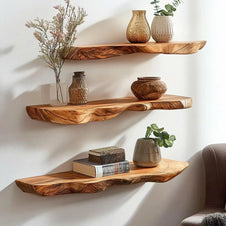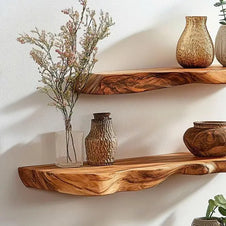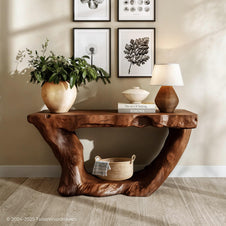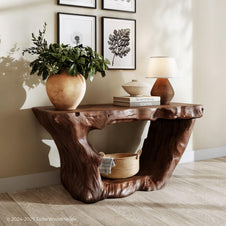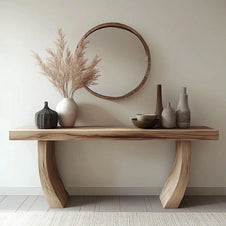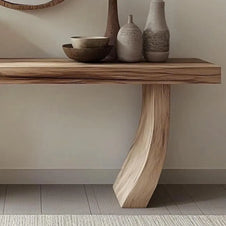Not all woods are created equal—especially when it comes to closet shelves. Pick the wrong type, and you risk sagging, splintering, or mold. So what is the best wood for closet shelves? Whether you're planning a sleek walk-in or upgrading a simple linen closet, this guide covers the most durable, stylish, and cost-effective wood types to help you build better and smarter.
1. Solid Wood Options: Reliable Choices That Endure Over Time
When it comes to strength, longevity, and natural aesthetics, solid wood still reigns supreme. While engineered options have their place, solid wood is often the top recommendation when asking what is the best wood for closet shelves.
Solid wood provides unmatched durability and timeless character. With proper finishing, it resists wear, moisture, and daily abuse—making it ideal for long-lasting shelves. Unlike engineered boards, solid wood won't delaminate or chip at the edges, especially when drilled or fastened. It's also easier to refinish if styles or needs change over time. This is why many homeowners and designers swear by solid hardwoods for closet shelving projects.
Oak – The Powerhouse of Closet Shelving

Oak is often the answer to what is the best wood for shelves in homes that demand both function and a classic aesthetic. It's especially popular in high-end custom closets and built-ins where weight support and longevity are critical.
Maple – Clean, Light, and Strong
-
Smooth, light-toned finish
-
Excellent strength-to-weight ratio
-
Easy to paint or seal
-
Performs well in humidity
Maple often tops the list when asking what is the best wood for closet shelves in modern or Scandinavian-style homes. It also works well for homeowners looking to match other maple furniture or millwork.
Pine – Softwood with Practical Perks
-
Lightweight and easy to cut
-
Takes stain or paint well
-
Prone to dents
-
Needs sealing for moisture protection

Pine may be the best answer to what is the best wood for shelves within a tight budget. It's widely available, ideal for quick DIY installs, and can still look great with a little effort in finishing.
Birch – The Smooth and Reliable Option
Birch is quietly one of the best solutions for what is the best wood for closet shelves balancing strength, price, and aesthetics. It offers a clean appearance that blends into any closet style.
Cedar – Natural Freshness and Bug Resistance
Cedar’s protective properties make it a strong contender when asking what is the best wood for closet shelves for specific needs. Plus, its scent and anti-microbial features make it ideal for fresh-smelling storage.
2. Engineered Wood Options: Affordable, but With Limits
Engineered wood often wins on budget, availability, and ease of use. But if you're still wondering what is the best wood for closet shelves, it's crucial to understand the trade-offs.
Engineered options come in a wide range of strength levels, price points, and aesthetics. They allow for customization and mass production but often require reinforcement and finishing. When used correctly, engineered wood can offer excellent results, especially in hidden or utility areas where looks matter less. That said, you must choose carefully to ensure stability over time.
Plywood – Strong and Versatile
-
High strength-to-weight ratio
-
Less likely to warp
-
Cabinet-grade is ideal for closets
-
Can be finished to look premium
Many builders recommend plywood as a budget-friendly answer to what is the best wood for closet shelves. It’s especially suitable for built-in closets or storage units where long spans and strength are required.
MDF – Smooth Surface, But Handle With Care
MDF can work with proper reinforcement, but for humid or heavy-use spaces, it's not the best answer to what is the best wood for closet shelves. Use it for light-duty, decorative applications where cost matters more than durability.
Particleboard – Cheap but Short-Lived
-
Prone to bowing and moisture damage
-
Often finished with laminate
-
Suitable for decorative or light-duty shelves
If you're looking for long-term performance, what is the best wood for closet shelves is definitely not particleboard. It may work for short-term or staging solutions, but not permanent storage.
Veneered Panels – The Hybrid Option
Veneered plywood often hits the mark when choosing what is the best wood for closet shelves on a budget. It allows you to achieve a polished look without the cost of solid hardwood.
3. Matching Wood to Use Case: One Wood Doesn’t Fit All
If you’re still asking what is the best wood for closet shelves, the real answer depends on where and how those shelves will be used.
Choosing wood by function ensures your shelves won't sag, mold, or wear out prematurely. A shelf storing towels doesn't need the same specs as one holding work boots or storage bins. Use cases guide not only wood type, but thickness, reinforcement, and finish.
Linen Closets:
Best woods: Cedar, birch or maple plywood
These spaces benefit from aromatic, mold-resistant, and clean woods that protect fabrics while adding a pleasant scent.
Bedroom Wardrobes:
Best woods: Solid oak or maple, plywood with hardwood veneer
Sturdy materials ensure support for daily clothing use, storage bins, and seasonal loads. Appearance also matters here.
Kids’ Closets:
Best woods: Birch plywood, painted MDF (reinforced)
Go for smooth, safe surfaces. Reinforced engineered wood can hold toys and clothes without splintering or chipping.
Walk-In Closets:
Best woods: Walnut veneer plywood, painted maple or oak
Walk-ins are both functional and stylish. Choose materials that balance visual appeal with strength.
Garage or Utility Closets:
Best woods: Exterior-grade plywood, pressure-treated pine
These are harsh environments. Prioritize moisture resistance and ruggedness over aesthetics.

Pro tip: Don’t use a single wood for every shelf. Mix based on visibility, load, and environment.
4. How to Choose Wood Based on Weight, Depth & Span
Choosing wood means thinking about more than just species. If you’re serious about what is the best wood for closet shelves, consider physical dimensions too.
This step ensures your shelves don’t bend or collapse over time. Many DIYers make the mistake of choosing good wood but stretching its span too far or making it too shallow to be useful. Thickness, depth, and support intervals are as critical as wood type.
Shelf Thickness:
-
3/4 inch: Standard for household use
-
1 inch: Better for wide or heavy-load shelves
-
1.25 inch+: Best for walk-ins or heavy storage
Use thicker shelves for longer spans or heavier contents. This reduces flex and increases lifespan.
Span Limits:
-
Solid hardwood (1"): Up to 36 inches
-
Plywood (3/4"): Up to 30 inches
-
MDF (3/4"): Max 24 inches
Support long shelves with cleats, brackets, or dividers to maintain structural integrity.
Depth:
-
10–12 inches: Clothes, bins, shoes
-
12–16 inches: Walk-in shelves
-
16+ inches: Only with reinforcement
Wider shelves store more, but require more support and stronger materials.
Pro tip: Factor in humidity. Even the best wood can sag under poor conditions.
Conclusion: What Is the Best Wood for Closet Shelves? It Depends—But Now You Know
So, what is the best wood for closet shelves?
It depends on your space, needs, and priorities:
-
For strength: Oak or maple
-
For looks on a budget: Veneered plywood
-
For cost-conscious builds: Birch plywood or reinforced MDF
-
For moisture-prone zones: Cedar or pressure-treated pine
-
For sustainability: FSC-certified or reclaimed wood
Now that you know what really matters—weight, space, humidity, and use case—you can make a choice that’s smarter, safer, and longer-lasting. Choosing the right wood means no more warping, no more sagging, and no more second-guessing every time you open your closet. Build it right the first time, and your shelves will thank you for years to come.
 The next time someone asks what is the best wood for shelves, you’ll already have the answer—and a closet that proves it.
The next time someone asks what is the best wood for shelves, you’ll already have the answer—and a closet that proves it.

